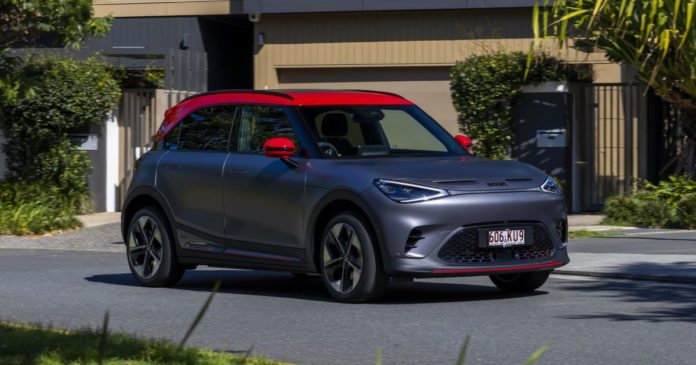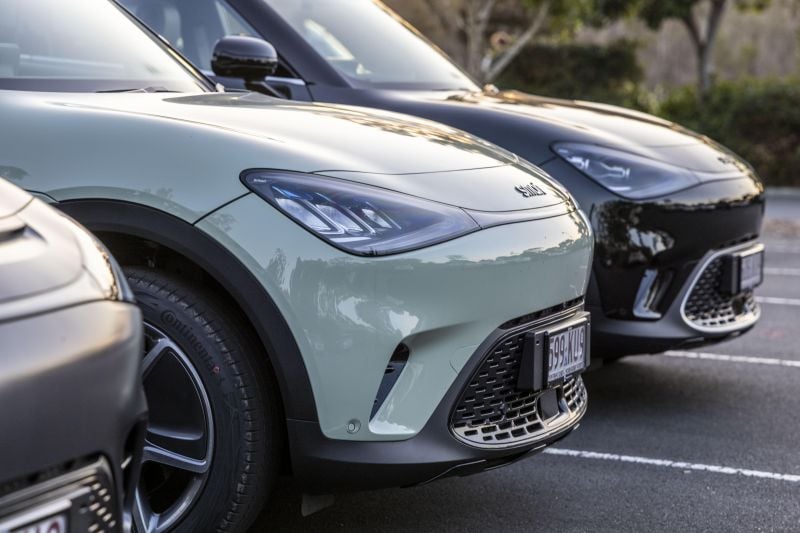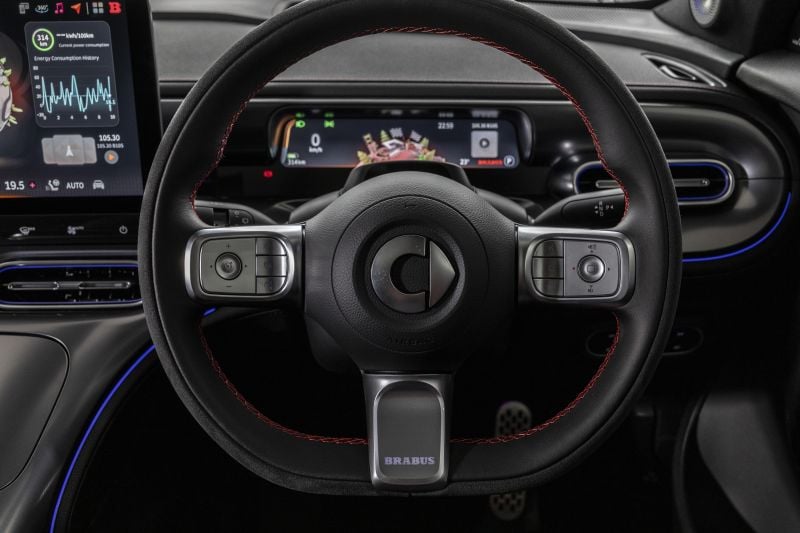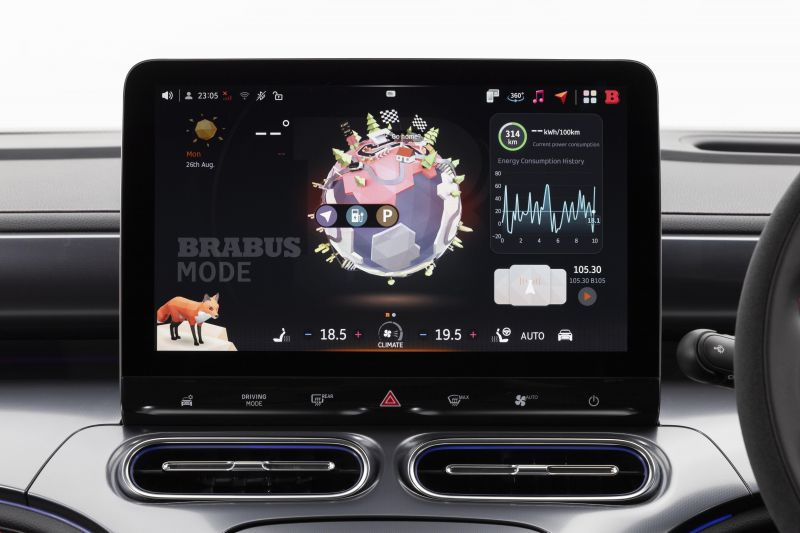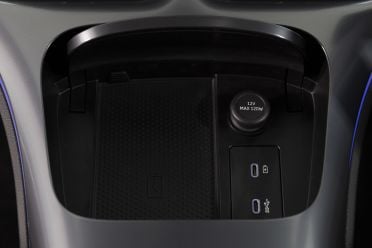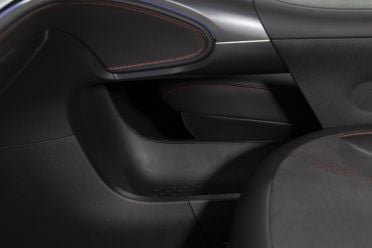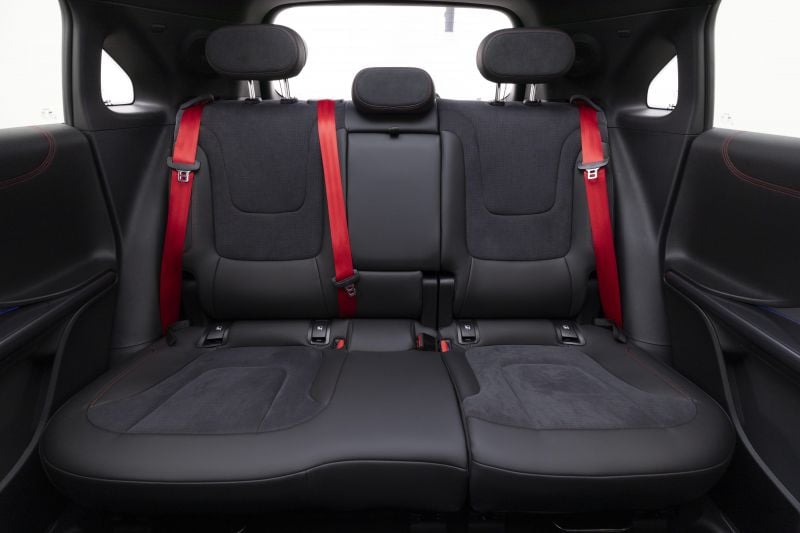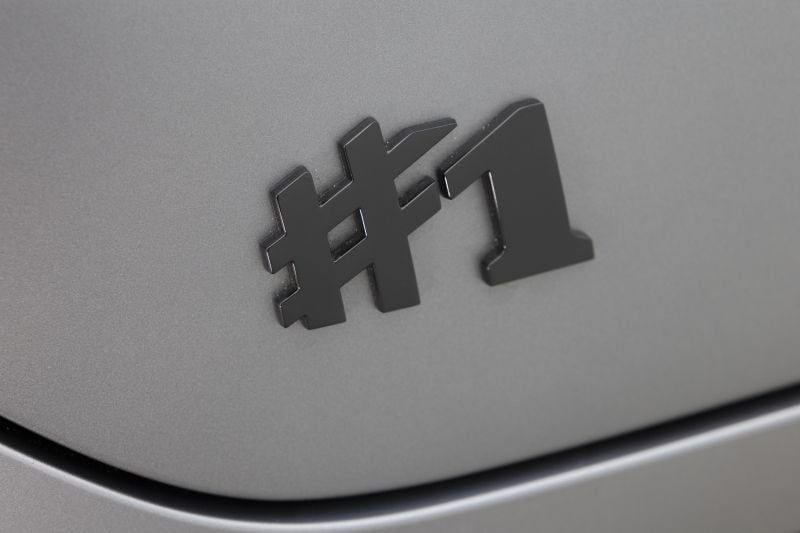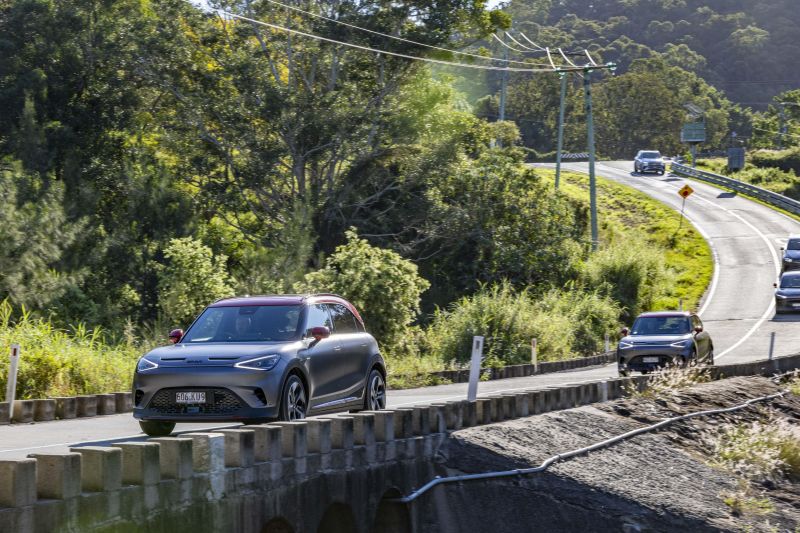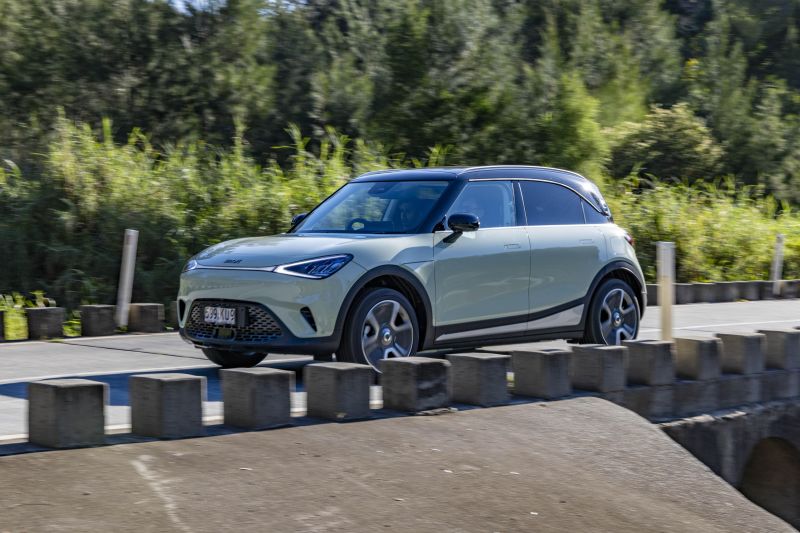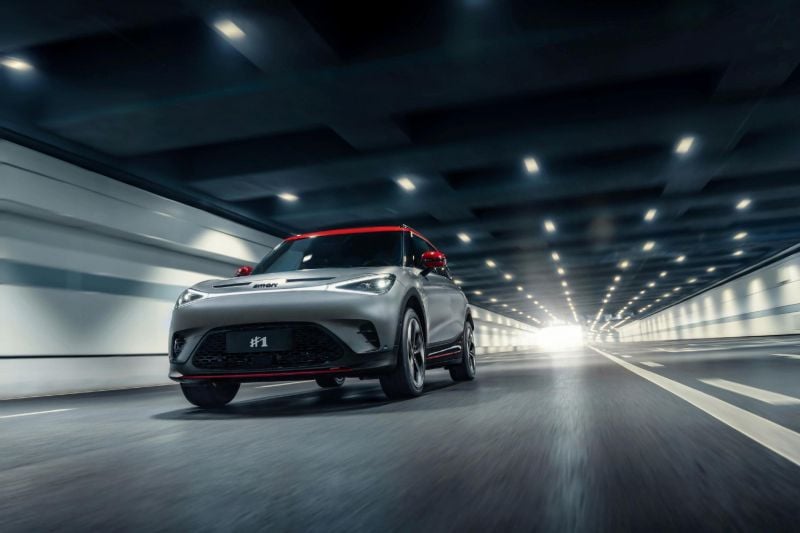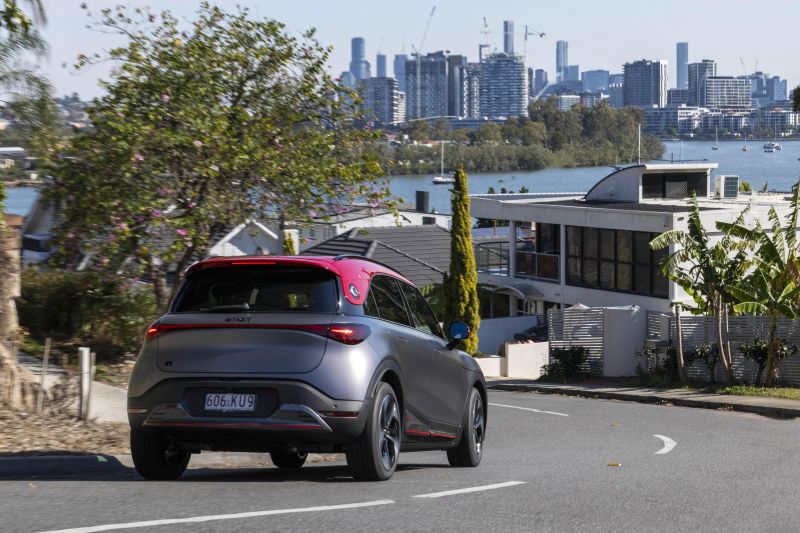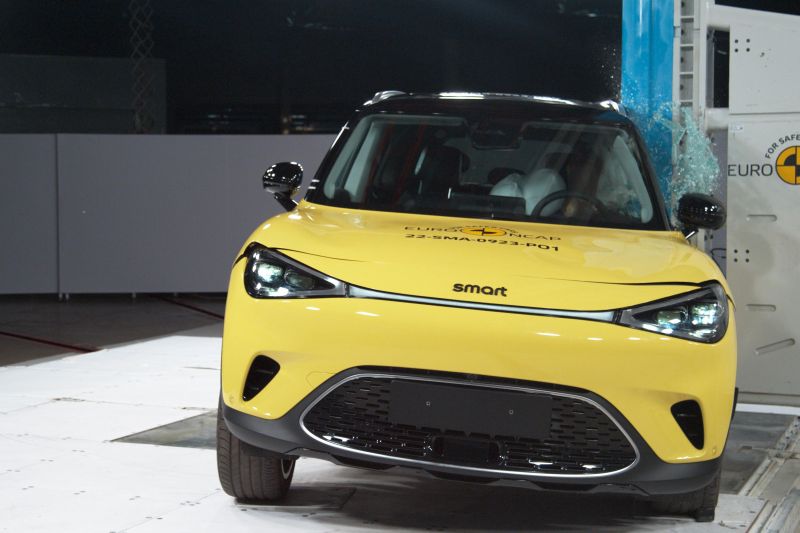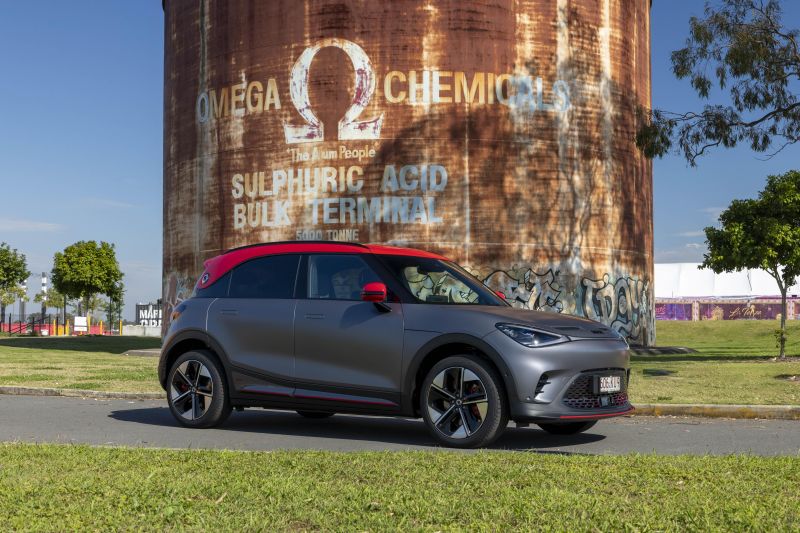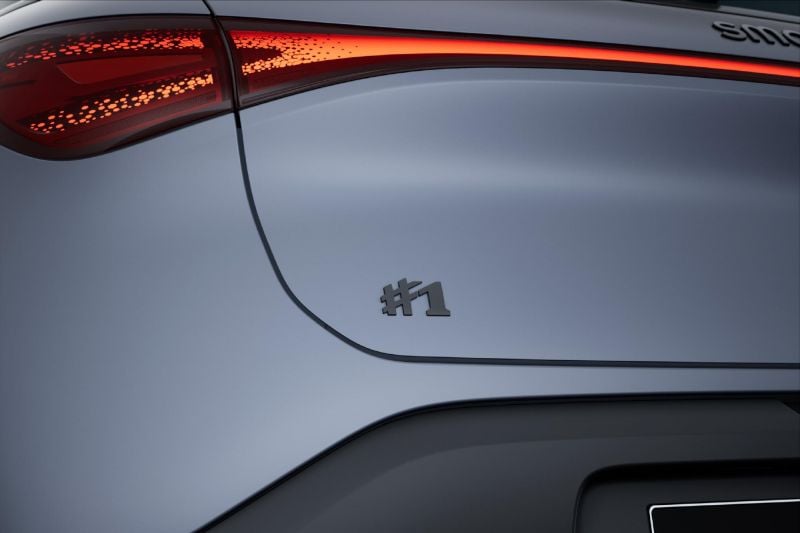For the first time since 2015, you can buy a Smart in Australia. The carmaker has relaunched Down Under with a one-two punch of new models. Or should I say, a #1-#3 punch.
The #1 is Smart’s take on a boxy compact SUV, with Geely electric powertrains under the skin and Mercedes-Benz styling inside and out.
The #3 follows a similar formula, trading the square proportions of its twin for a sloping coupe body.
There’s plenty of carryover between the pair – they share powertrains, interior features, and technology – and this review will reflect that. In many ways, the Smart #1 is the sensible, more family focused member of the range.
That places a lot of responsibility on its shoulders; there’s no shortage of family car competition in this price bracket.
Contending against not only electric crossovers, but petrol SUVs and everything in between, does the #1 punch above its weight?
How does the Smart #1 compare?
View a detailed breakdown of the Smart #1 against similarly sized vehicles.

Smart
#1
How much does the Smart #1 cost?
The #1 is the cheaper of the two Smart model lines, priced $3000 cheaper than the #3 across the range.
| Model | Price before on-roads |
|---|---|
| 2025 Smart #1 Pro+ | $54,900 |
| 2025 Smart #1 Premium | $58,900 |
| 2025 Smart #1 Brabus | $67,900 |
To see how the Smart #1 lines up against the competition, check out our comparison tool.
What is the Smart #1 like on the inside?
Right across the range, the Smart #1 offers a comfortable and practical interior space.
-
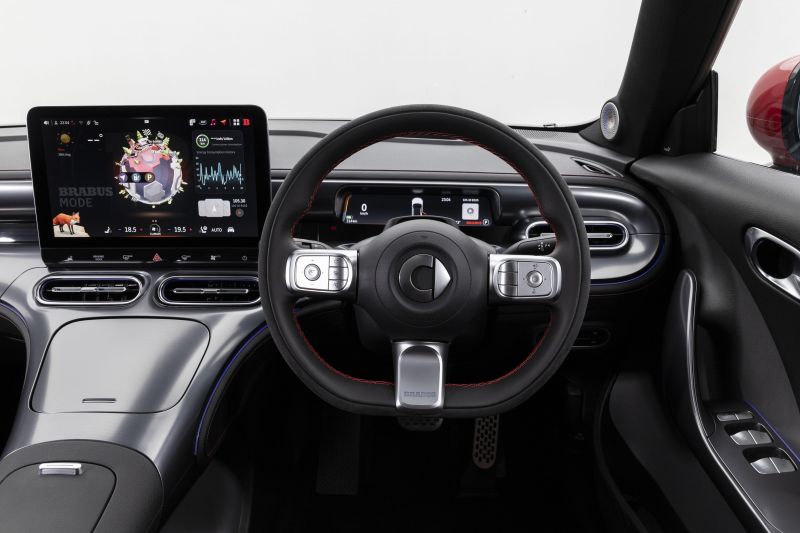
Brabus
There’s heaps of space in the cabin relative to the size of the car, and a variety of interesting material combinations across the model line-up.
The base car comes with black synthetic leather upholstery, while three choices of leather are available in the Premium. Spend up for the Brabus and you get leather and suede sport seats with the Brabus badge embossed in the headrest.
All are comfortable, and the front seats are heated and electrically adjustable with lumbar controls across the range. You’d expect that kind of kit in the $70,000 Brabus, but it’s a point of difference for the Pro+ when compared to rivals.
The available interior colour schemes are classy, with just enough flair to make them pop. The top-spec car takes full advantage of the Brabus name, with badges plastered everywhere, inside and out.
While it’s hard to fault the aesthetics, the quality of the materials used is hit and miss.
The firm leather steering wheel is neither here nor there, but the doors show off a bit too much plastic. Further, the metal effect featured on the dash, central tunnel and door cards of the Pro+ and Brabus variants looks a little cheap.
However, the main touch points are padded and trimmed in premium materials, and elements such as the air vents and speakers are elegantly integrated into the design of the cabin.
The integration of technology, on the other hand, needs more work.
All versions of the Smart #1 come with a 12.8-inch infotainment touchscreen and a 9.2-inch digital instrument cluster, while the Premium adds a 10.25-inch head-up display.
The instrument cluster is long but very narrow, displaying only critical information. It’s essentially an overview of what’s going on in the car – refreshingly minimalist.
In my experience it also functioned as a safety feature, keeping my eyes on the road or the HUD if required.
However, the infotainment screen undoes much of that good work. It’s a major source of distraction.
Smart has taken a button-free approach to the centre stack, opting to incorporate all controls into either the touchscreen or haptic buttons below it.
It results in a clean look but some impracticalities. For example, the side mirrors can only be adjusted through the infotainment menus, unless you program them to correspond to a single flexible-use button on the steering wheel. Climate controls are buried in the screen, too.
Beyond that, it’s just generally tiresome scouring menus to complete a simple task. Voice control would come in handy in these situations, but it wasn’t functional in our test cars. The same can be said of Smart’s AI Fox (it’s a Cheetah in the #3) avatar, which refused to engage with me or provide assistance.
It’s safe to assume these kinks will be ironed out by the time cars reach customers, but it limits our ability to assess the system fairly. On the topic of programming quirks, the satellite navigation systems in the test cars were stuck in China, as was the weather app.
On a positive note, the touchscreen itself was responsive to inputs, and the graphics are top notch. Furthermore, the basic smartphone layout is easy to navigate, and customisation is in ample supply.
For example, the Smart #1 offers a seemingly endless number of ambient lighting combinations.
If the native infotainment system proves too overwhelming, wireless smartphone mirroring is standard across the range. Options for device charging are plentiful, with a wireless charger and dual USB-C outlets located in the floating centre stack. You’ll find a 12V outlet hidden underneath.
Smart brags about the storage capacity of its new models and it’s tough to argue. The #1 has spacious front door bins, a large tray under the floating centre tunnel, a deep armrest bin with cooling, and various other cubby holes.
Second row space also impresses in the #1. It offers more than the #3 in this regard, with extra headroom.
The seats lack the toys of those up front, but they’re still plush. There’s heaps of legroom too – the second row slides back and forth in the #1, unlike the #3 which has fixed seats.
However, anyone who would generally be considered really tall might struggle.
The combination of a panoramic sunroof and light-coloured headliner (in Pro+ and Premium examples) gives the second row an airy feel.
Second row amenities include a pair of USB outlets (USB-A and USB-C), a centre armrest with fixed cupholders, wide door bins, and map pockets. The Smart #1 is just about fit for anything a modern family could throw at it.
Claimed boot capacity for the Smart #1 is 421 litres, expanding to 986L with the rear seats folded flat.
That number seems about right – the square rear of the #1 sets up well for some luggage Tetris, as opposed to the awkward boot dimensions of the #3.
All variants score a powered tailgate, but there’s a high load lip to lift items into the boot. Folding the rear seats (60/40 split) creates a bench for extra storage.
Adequate lighting, side nets and under floor storage all provide some extra practicality.
| Dimensions | Smart #1 |
|---|---|
| Length | 4270mm |
| Width | 1822mm |
| Height | 1636mm |
| Wheelbase | 2750mm |
| Cargo capacity | 421 litres (5-seat) 986 litres (2-seat) |
To see how the Smart #1 lines up against the competition, check out our comparison tool.
What’s under the bonnet?
Smart has re-launched as an all-electric brand, so you won’t find an internal combustion engine under the bonnet of any models.
With the #1, Smart offers the choice of two electric powertrains – Pro+ and Premium examples are equipped with a single-motor setup, while the flagship Brabus ups the ante with by adding a second electric motor.
| Specifications | Smart #1 Pro+ | Smart #1 Premium | Smart #1 Brabus |
|---|---|---|---|
| Drivetrain | Single-motor electric | Single-motor electric | Dual-motor electric |
| Battery | 66kWh lithium nickel cobalt manganese | 66kWh lithium nickel cobalt manganese | 66kWh lithium nickel cobalt manganese |
| Power | 200kW | 200kW | 315kW |
| Torque | 343Nm | 343Nm | 543Nm |
| Driven wheels | Rear-wheel drive | Rear-wheel drive | All-wheel drive |
| Weight | 1788kg | 1800kg | 1900kg |
| 0-100km/h (claimed) | 6.7s | 6.7s | 3.9s |
| Power consumption (claimed) | 17kWh/100km | 16.7kWh/100km | 17.9kWh/100km |
| Claimed range | 420km | 440km | 400km |
| Max AC charge rate | 7.4kW | 22kW | 22kW |
| Max DC charge rate | 150kW | 150kW | 150kW |
To see how the Smart #1 lines up against the competition, check out our comparison tool.
How does the Smart #1 drive?
The Smart #1acquits itself well, whether it’s zipping around the city, cruising on the highway, or taking on a twisty country road.
Single motor models produce 200kW and 343Nm, which is plenty to get the #1 moving from a set of traffic lights, and enough to offer rewarding rolling acceleration.
Step up to the Brabus and outputs jump to 315kW/543Nm, enabling a bonkers 0-100km/h sprint time of 3.9 seconds. Behind the wheel, it feels every bit that quick.
But as is the case with most EVs, that doesn’t make it a performance car.
Aside from lumping in an extra electric motor, Smart has only made minor suspension tweaks to the #1 Brabus.
As a result, the #1 is no corner carver. With the addition of all-wheel drive, the Brabus can negotiate bends at speed without losing any grip. It’s just not massively rewarding to drive in that way.
The #1 is more upright and blockier than its stablemate, resulting in some lean through corners. It certainly feels less hunkered down and purposeful.
After all, you wouldn’t look at the #1 and think that it’s some kind of track weapon.
Rather, the #1 is better suited to everyday urban driving, where it offers a smooth and comfortable electric experience, all while boasting the straight-line speed to make some supercars look silly.
When driven sensibly the #1 shows off its combination of Geely electric know-how and Mercedes-Benz refinement.
In all settings both powertrains are whisper quiet, and the cabin is further insulated by excellent sound deadening that minimises any road noise. However, the cuboid #1 is prone to wind noise from time-to-time.
The Smart #1 rides on a smooth suspension setup that irons out even the worst bumps on Australian roads. Our drive program included urban, highway, and rural roads, all of which the cars took in their stride.
While not standout the steering is light and direct, and the car is compact enough to feel manoeuvrable.
On the highway the #1 is a refined cruiser – quiet, smooth, and easy to drive.
All variants have adaptive cruise control with stop/go as well as highway assist, so once you plug in a speed it’s easy to let the car do most of the work. Smart’s pilot system provides smooth steering inputs, unlike some other cars that yank the wheel around in your hands.
Several drive modes are available across the range. Every #1 has separate eco, normal, comfort, and sport modes.
The difference between them was negligible from a driving standpoint, which is to say none of the strengths of the #1 were compromised by the different settings.
A fifth mode – Brabus – gives the flagship model a bit of extra kick, tweaking the powertrain for performance and adding sensitivity to the throttle pedal.
Brake regeneration can also be adjusted. In its ‘low’ setting, the #1 coasts in a relaxing manner. Smart claims the #1 offers single-pedal driving, but we found that the e-Pedal mode fell just short of that claim.
My bet would be most Australian Smart buyers use their car for city duties, and that’s where the #1 makes more sense.
From an efficiency standpoint, EVs shine in low speed, stop-start driving conditions, and I managed to beat Smart’s 16.7-17.9kWh/100km across our test.
Driver assist technologies such as traffic sign recognition are relatively effective, and any warnings are delivered in a palatable way.
While rear visibility isn’t outstanding, all #1 models are equipped with a surround-view camera, as well as several more focused exterior cameras.
Parking a car of this size was never likely to be an issue, but the suite of parking assists make it an easy task. I found the kerb-view camera especially useful when hugging the edge of tight suburban streets.
What do you get?
Smart #1 Pro+ highlights:
- 19-inch wheels
- LED headlights
- Panoramic roof
- 12.8-inch infotainment screen
- Wireless Apple CarPlay and Android Auto
- Powered tailgate
- Smart pilot assist
- 7.4kW AC charging
- 130kW DC charging
- Customisable ambient lighting
Smart #1 Premium adds:
- Matrix LED headlights
- Leather upholstery
- Beats 640W sound system
- Heat pump
- Automatic parking assist
- 10-inch head-up display
- 22kW AC charging
- 150kW DC charging
- 13-speaker Beats sound system
Smart #1 Brabus adds:
- Unique Brabus exterior design
- Brabus drive mode
- Sports seats
- Microfibre suede upholstery
Is the Smart #1 safe?
The Smart #1 has not yet been safety tested by ANCAP, although it received a five-star rating from Euro NCAP back in 2022.
Euro NCAP awarded a 96 per cent score for adult occupant protection, 89 per cent for child occupant protection, 71 per cent for vulnerable road users, and 88 per cent for safety assist.
Standard safety features include:
- 7 airbags
- Blind-spot monitoring
- Autonomous emergency braking
- Highway assist
- Evasive manoeuvre assist
- Lane keep assist
- Traffic jam assist
- Adaptive cruise control with stop/go
- Traffic sign recognition
- Lane change assist
- Automatic parking assist
- Front and rear parking sensors
- Surround-view camera
How much does the Smart #1 cost to run?
The Smart range is backed by a five-year, 150,000km warranty.
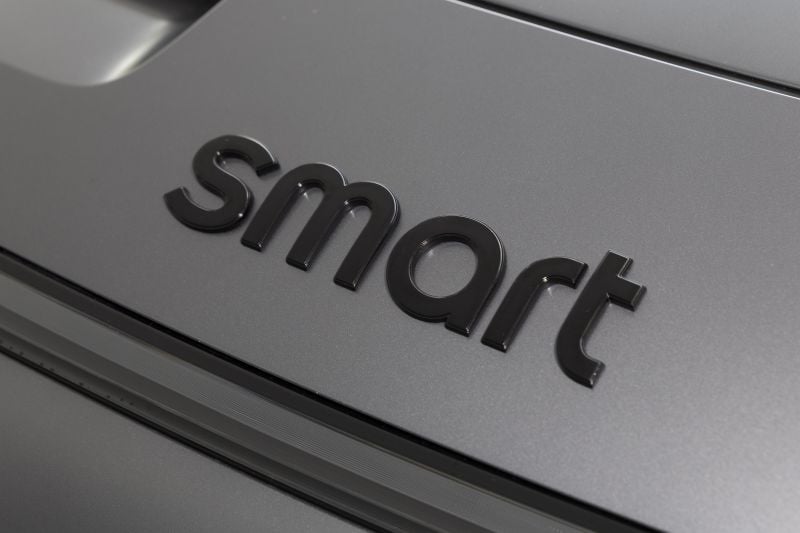
LSH Auto is offering service packs spanning three or four years, with pricing that varies depending on the model.
There is also the option to incorporate service packages into finance deals, and to price protect against any price rises.
| Running costs | Smart #3 |
|---|---|
| Warranty | 5 years, 150,000km |
| Roadside assistance | 5 years |
| Service intervals | 12 months or 20,000 kilometres |
| Capped-price servicing | 4 years, 80,000km |
| Total capped-price service cost | $2445 (Pro+) $2495 (Premium) $3120 (Brabus) |
CarExpert’s Take on the Smart #1
Like the #3, the Smart #1 is a well-rounded package offering comfort, refinement, flamboyant design, and a punchy electric powertrain.
On top of that, it’s a more practical shape for everyday use, with a bigger boot and extra rear headroom.
But if it’s practicality you’re chasing, why buy a Smart in the first place? Some more boring seven-seat SUVs can be had at this price point, and plenty of more sensible mid-sized petrol SUVs are out there.
If it simply must be electric, then the Tesla Model Y is now priced ultra competitively.
If that’s too boring, the Mini Countryman offers similar traits with the added security of familiar branding.
Essentially, the #1 enters a hot segment featuring cars of many differing talents. The majority of those cars are made by trusted brands with a long track record of satisfying Australian customers.
Buying into the #1 means taking a risk, embracing the unknown.
It’s a thoroughly resolved car with plenty to offer, and against electric rivals, the price is right. However, something tells me that many new car buyers will find an excuse to look elsewhere.
Click the images for the full gallery
MORE: Buy a Smart #1
MORE: Everything Smart #1

